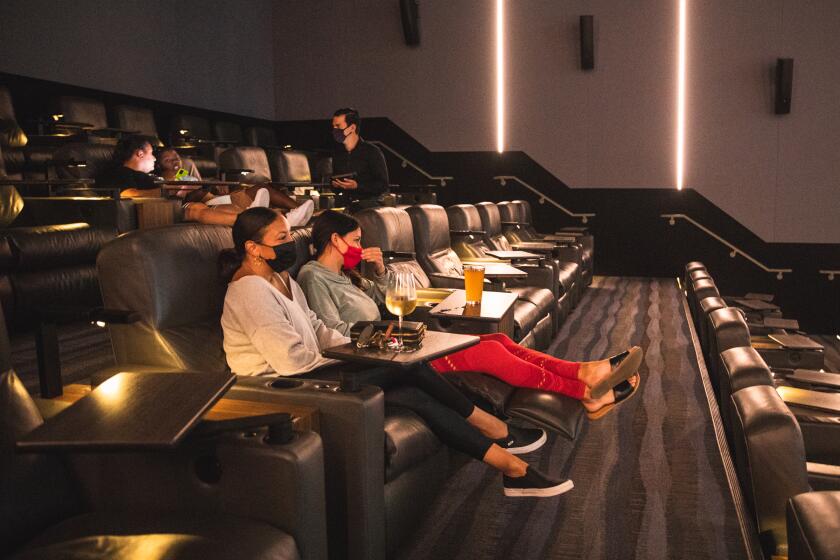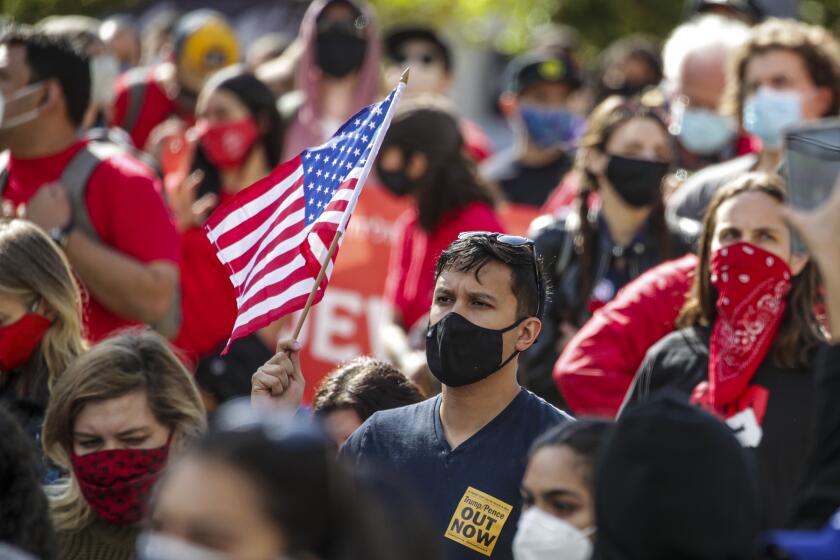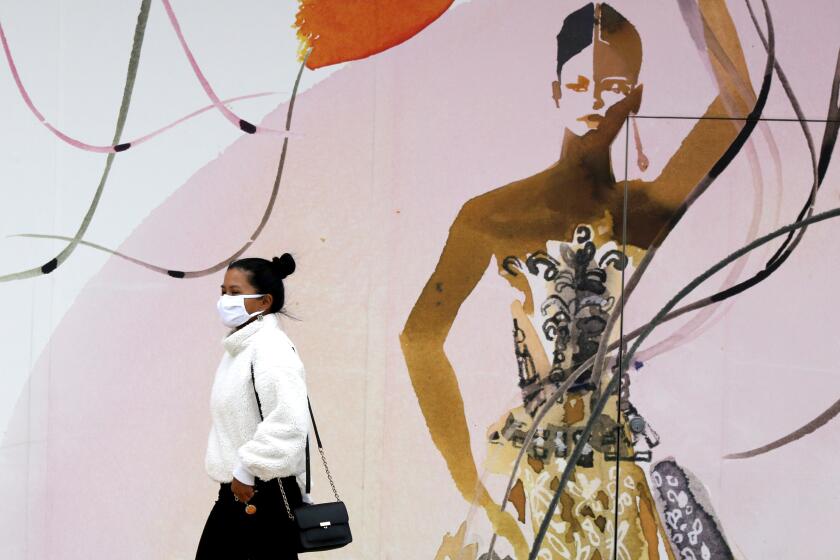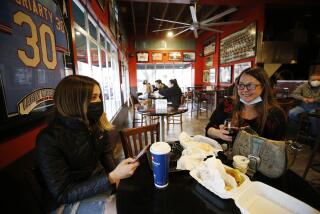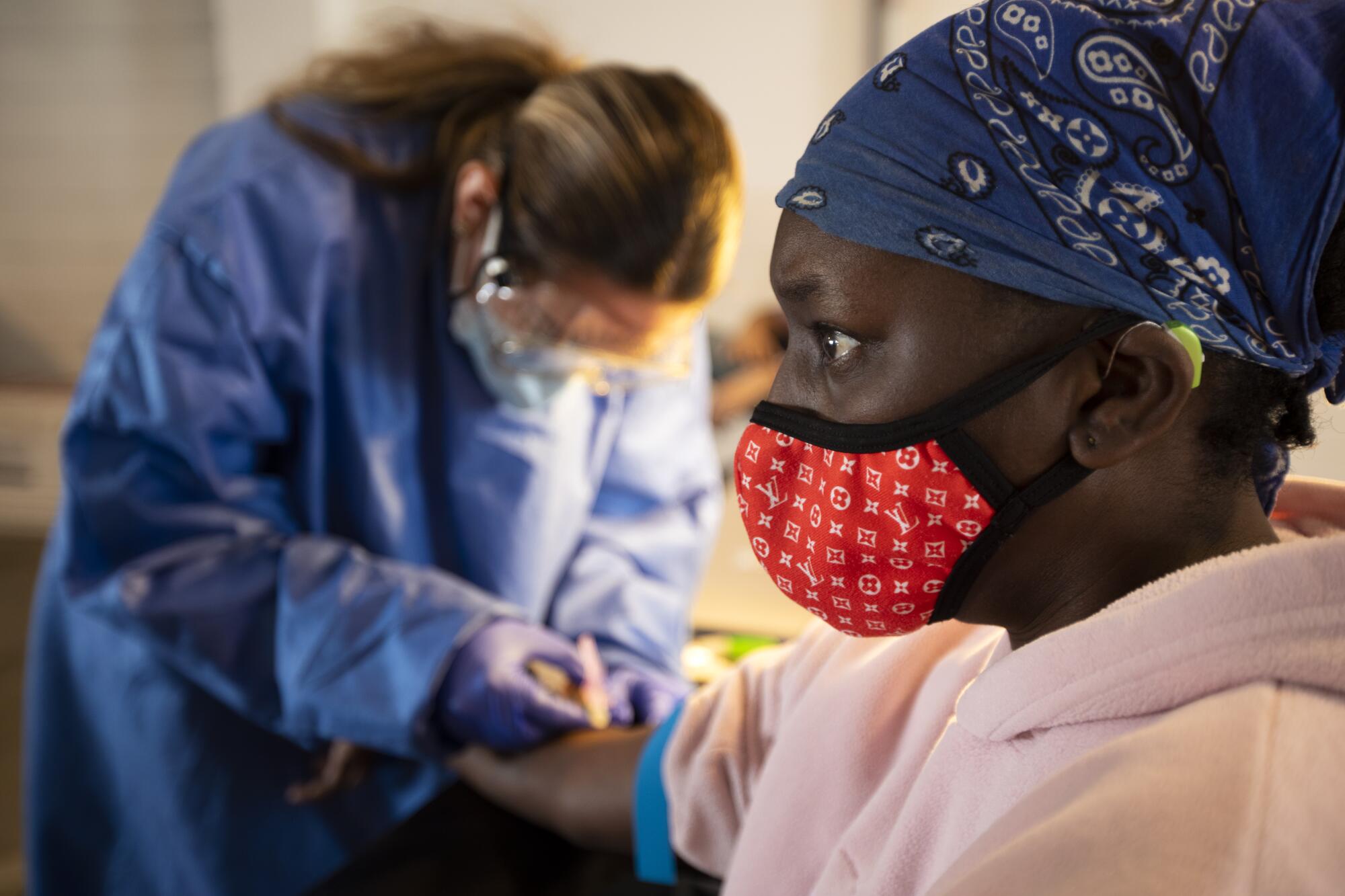
- Share via
Eleven counties moved back to more restrictive tiers in California’s coronavirus reopening system Tuesday, an unprecedented regression as the state contends with an increasingly worrying surge in infections.
Among the backsliders were San Diego, Sacramento and Stanislaus counties, all of which moved into the purple tier — the strictest category of the state’s reopening roadmap. A sharp rise in cases in San Francisco prompted officials there Tuesday to ramp up restrictions, meaning that indoor dining will be suspended, capacity at gyms and theaters will be reduced and the city’s high schools will have to wait to reopen.
This week also marked the first time that no counties moved forward into a less restrictive tier, said California Health and Human Services Secretary Dr. Mark Ghaly.
“We anticipate, if things stay the way they are, that between this week and next week, over half of California counties will have moved into a more restrictive tier,” he said Tuesday. “And so that certainly is an indication that we’re concerned and that we have to keep a close watch on what’s happening.”
With the three new additions to the purple tier, nearly one-quarter of California counties now find themselves living under the most stringent coronavirus-related restrictions. The others are Los Angeles, Riverside, San Bernardino, Imperial, Monterey, Tulare, Madera, Sonoma, Tehama and Shasta counties.
California’s system, which determines the extent to which businesses, schools and other public spaces can operate, is broken into four color-coded tiers: purple, followed by red, orange and yellow.
Moving to the purple tier forces many businesses and organizations to either reduce capacity or move their operations outdoors.
San Diego County restaurants, places of worship and movie theaters must cease indoor operations by 12:01 a.m. Saturday.
Counties are placed into tiers based on two primary metrics: the average daily number of new COVID-19 cases for every 100,000 residents and the percentage of conducted tests that detect the coronavirus.
The counties are at risk of regressing if their metrics fall in the defined range of a more restrictive tier for two straight weeks.
“To advance back into the red Tier 2, Sacramento County needs to have lower daily case rates. The only way to do that is to do what we know works,” said Sacramento County’s health officer, Dr. Olivia Kasirye. “We all have a part in this.”
The other counties that moved backward Tuesday were Amador, Contra Costa, El Dorado, Placer and Santa Cruz, which are now in red; and Modoc, Siskiyou and Trinity, now in orange.
State officials have said the tiered system is deliberative by design — meant to give officials time to review and digest data before deciding whether wider reopenings or further restrictions are warranted.

“This is exactly why we designed the tier status the way we did,” Gov. Gavin Newsom said during a briefing Monday. “It was about being more and less restrictive — not based upon political whim, but based upon the data, based upon the epidemiology, based upon the facts on the ground and, again, based upon local conditions in the 58 counties throughout the state of California.”
As of Tuesday’s tier update, 13 counties are in the purple tier, 22 in red, 17 in orange and six in yellow.
“I think a number of counties are indeed experiencing quite high levels of cases — not necessarily the highest they’ve ever seen, but certainly compared to the lows we’ve been experiencing over the past couple months,” Ghaly said.
During the most recent seven-day period that ended Sunday, Los Angeles County reported more than 13,000 cases, a 38% jump from the previous week and the highest number of weekly cases in more than two months.
Business owners in counties that now find themselves in the purple tier will have to adjust their operations to meet the stricter guidelines. For instance, restaurants will no longer be allowed to offer indoor dine-in service.
At tiny Masullo Pizza in Sacramento, though, the new restrictions won’t be felt too hard.
When word first came that indoor dining would be allowed at reduced capacity, the neighborhood favorite — with its open kitchen and communal tables — decided to play it safe and keep diners outside, said cook Paul Quiroz.
“We’ve been really stringent,” he said, adding that the pandemic hasn’t hurt sales too badly so far. “We’ve been fortunate in that. We have a decent amount of business.”

Not everyone has been so lucky. At Solfire Yoga in the core of Sacramento’s once-thriving midtown district, owner Ellen Moe said she has lost about 70% of her revenue since the pandemic started, but had just seen a minor uptick since being able to resume in-studio classes with 10% capacity at the end of September.
The latest news, though, has her feeling as if “every time we get a little momentum, we get shut down again.”
The studio moved classes outside during the warm summer months, but “now it’s pretty chilly here in Sacramento,” she said. While she wants to keep her customers safe, Moe said she wished there was more help for businesses such as hers.
“My business has been decimated,” she said.
Randall Selland, who owns six restaurants in Sacramento — including Ella, a favorite of legislators in the nearby Capitol — said he was frustrated by what he sees as “no coherent message on how to get through this.”
Ella has been closed since March because its overhead and location in an area with a large homeless population made it difficult to do outdoor dining, Selland said.
Though his other establishments have invested in outdoor dining, fall temperatures hit hard in Northern California this week, and he thinks diners willing to brave the cold will be “few and far between.”
He said he would like to see a more targeted approach to closures.
“This blanket shutdown, I don’t think it’s right,” Selland said. “It should be a case-by-case effort. If you are not following the rules, you get shut down, instead of just going back and forth all the time.”
While moving to a more restrictive tier will undoubtedly present challenges from a business perspective, Ghaly said he views the larger issues of public and economic health as intertwined.
“We do think about it very broadly. And a number of us believe and see evidence that working to control the transmission of COVID — making sure that it doesn’t have the horrific impact in California that we’ve seen in other parts of the nation and other parts of the globe — is protecting not just our public health in the narrow sense, but our broad sense of public health, which includes our economic health,” he said.
Officials have been striving to move through the state’s color-coded reopening system and toward economic recovery. But could rising coronavirus cases threaten Orange County’s progress?
While the reasons for increased coronavirus spread — and the type of behaviors and venues driving those trends — can vary from county to county, Ghaly said this week that “almost each county that’s having increased transmission, they mention private household gatherings as a major source of spread.”
Health officials throughout the state have been emphasizing that mantra for months, saying that residents’ choices on gatherings, as well as the precautions they do or don’t take when doing so, will play a major role in shaping how the pandemic plays out.
California already finds itself at a new crossroads. Coronavirus cases are beginning to trend distressingly upward in the state and are skyrocketing in many parts of the nation.
The latest seven-day average for new cases statewide is 6,078, up from the 14-day average of 5,216.
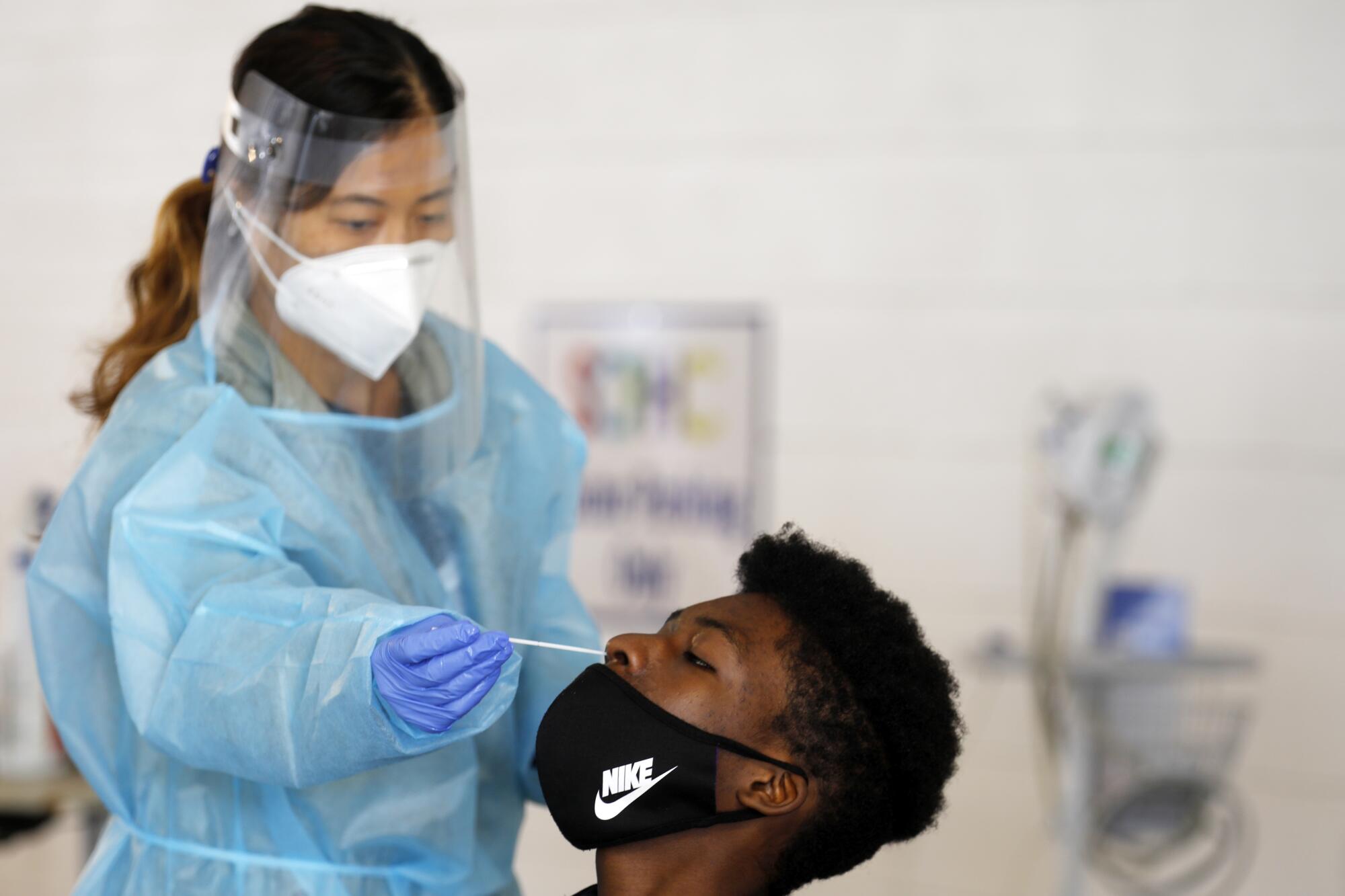
The state is fast approaching 1 million total cases and, as of this week, had officially recorded more than 18,000 deaths.
The virus also continues to spread faster in certain communities; in Santa Clara County, it’s in the heavily Latino neighborhoods of East San Jose and Gilroy.
In Los Angeles, the eastern San Fernando Valley neighborhoods of Pacoima and Sun Valley have double the adjusted coronavirus case rate of the county’s, with the communities reporting rates of 506 cases per 100,000 residents and 456 cases per 100,000 residents, respectively, over the last two weeks; the countywide rate is 188 cases per 100,000 residents.
More than a dozen other communities are also of particular concern because of increasing rates of cases: Palmdale, Lancaster, East Los Angeles, Van Nuys, El Monte, Downey, Pomona, North Hollywood, Glendale, Santa Clarita, South Gate, Florence-Firestone, Canoga Park and Panorama City.
But, experts say, the virus won’t just stay in certain pockets.
“This virus is going to spread. That’s what this virus does. And so it’s not just about the communities that are seeing higher case rates,” said Dr. Sara Cody, the Santa Clara County health officer.
Dr. John Swartzberg, an infectious disease expert at UC Berkeley, said he believes the coronavirus is likely to swamp California in December and that parts of the state economy will have to be shut down.
He said the virus is spreading through travel from states where it is out of control, and California will not be spared.
“Within a month after Thanksgiving, the number of cases is going to be up significantly,” Swartzberg said. “California is going to be very worried, and we will start to see things close down.”
The latest maps and charts on the spread of COVID-19 in California.
Times staff writers Susanne Rust and Maura Dolan contributed to this report from San Francisco.
More to Read
Sign up for Essential California
The most important California stories and recommendations in your inbox every morning.
You may occasionally receive promotional content from the Los Angeles Times.
